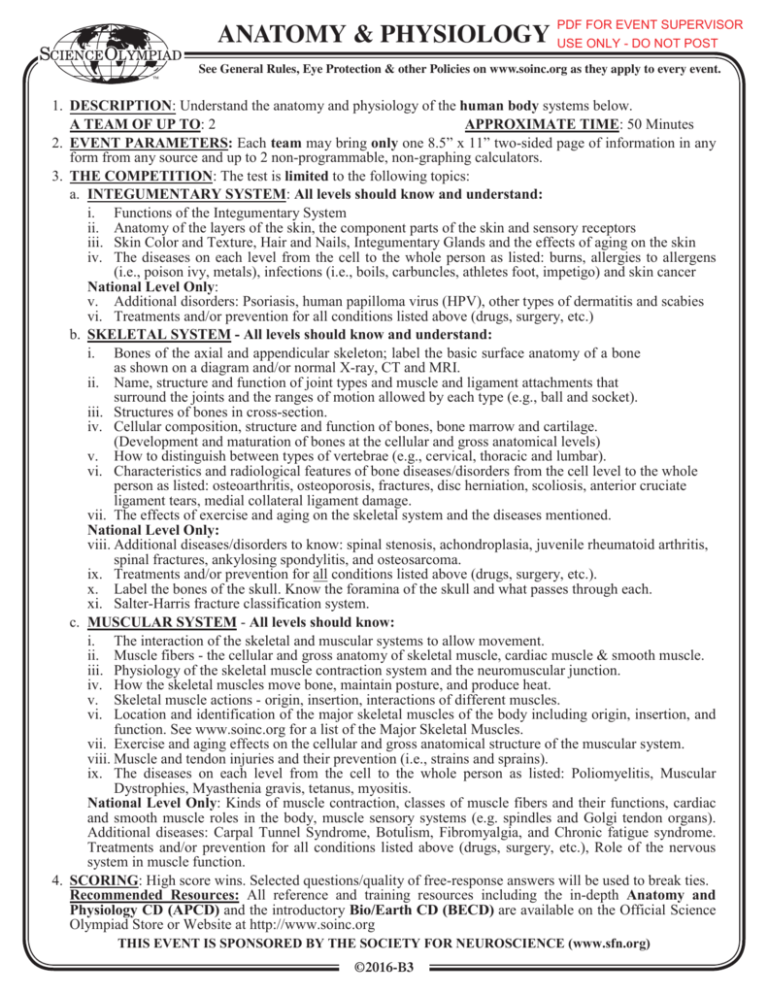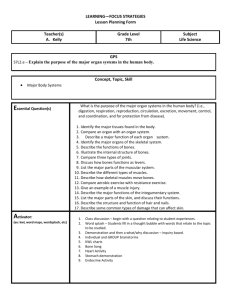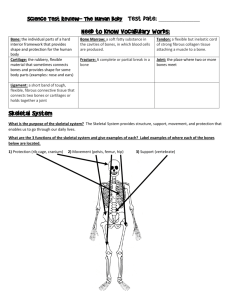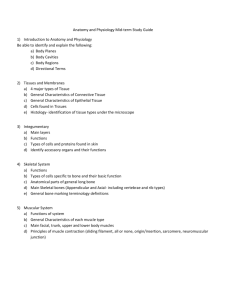ANATOMY & PHYSIOLOGY
advertisement

ANATOMY & PHYSIOLOGY USE ONLY - DO NOT POST PDF FOR EVENT SUPERVISOR See General Rules, Eye Protection & other Policies on www.soinc.org as they apply to every event. 1. DESCRIPTION: Understand the anatomy and physiology of the human body systems below. A TEAM OF UP TO: 2 APPROXIMATE TIME: 50 Minutes 2. EVENT PARAMETERS: Each team may bring only one 8.5” x 11” two-sided page of information in any form from any source and up to 2 non-programmable, non-graphing calculators. 3. THE COMPETITION: The test is limited to the following topics: a. INTEGUMENTARY SYSTEM: All levels should know and understand: i. Functions of the Integumentary System ii. Anatomy of the layers of the skin, the component parts of the skin and sensory receptors iii. Skin Color and Texture, Hair and Nails, Integumentary Glands and the effects of aging on the skin iv. The diseases on each level from the cell to the whole person as listed: burns, allergies to allergens (i.e., poison ivy, metals), infections (i.e., boils, carbuncles, athletes foot, impetigo) and skin cancer National Level Only: v. Additional disorders: Psoriasis, human papilloma virus (HPV), other types of dermatitis and scabies vi. Treatments and/or prevention for all conditions listed above (drugs, surgery, etc.) b. SKELETAL SYSTEM - All levels should know and understand: i. Bones of the axial and appendicular skeleton; label the basic surface anatomy of a bone as shown on a diagram and/or normal X-ray, CT and MRI. ii. Name, structure and function of joint types and muscle and ligament attachments that surround the joints and the ranges of motion allowed by each type (e.g., ball and socket). iii. Structures of bones in cross-section. iv. Cellular composition, structure and function of bones, bone marrow and cartilage. (Development and maturation of bones at the cellular and gross anatomical levels) v. How to distinguish between types of vertebrae (e.g., cervical, thoracic and lumbar). vi. Characteristics and radiological features of bone diseases/disorders from the cell level to the whole person as listed: osteoarthritis, osteoporosis, fractures, disc herniation, scoliosis, anterior cruciate ligament tears, medial collateral ligament damage. vii. The effects of exercise and aging on the skeletal system and the diseases mentioned. National Level Only: viii. Additional diseases/disorders to know: spinal stenosis, achondroplasia, juvenile rheumatoid arthritis, spinal fractures, ankylosing spondylitis, and osteosarcoma. ix. Treatments and/or prevention for all conditions listed above (drugs, surgery, etc.). x. Label the bones of the skull. Know the foramina of the skull and what passes through each. xi. Salter-Harris fracture classification system. c. MUSCULAR SYSTEM - All levels should know: i. The interaction of the skeletal and muscular systems to allow movement. ii. Muscle fibers - the cellular and gross anatomy of skeletal muscle, cardiac muscle & smooth muscle. iii. Physiology of the skeletal muscle contraction system and the neuromuscular junction. iv. How the skeletal muscles move bone, maintain posture, and produce heat. v. Skeletal muscle actions - origin, insertion, interactions of different muscles. vi. Location and identification of the major skeletal muscles of the body including origin, insertion, and function. See www.soinc.org for a list of the Major Skeletal Muscles. vii. Exercise and aging effects on the cellular and gross anatomical structure of the muscular system. viii. Muscle and tendon injuries and their prevention (i.e., strains and sprains). ix. The diseases on each level from the cell to the whole person as listed: Poliomyelitis, Muscular Dystrophies, Myasthenia gravis, tetanus, myositis. National Level Only: Kinds of muscle contraction, classes of muscle fibers and their functions, cardiac and smooth muscle roles in the body, muscle sensory systems (e.g. spindles and Golgi tendon organs). Additional diseases: Carpal Tunnel Syndrome, Botulism, Fibromyalgia, and Chronic fatigue syndrome. Treatments and/or prevention for all conditions listed above (drugs, surgery, etc.), Role of the nervous system in muscle function. 4. SCORING: High score wins. Selected questions/quality of free-response answers will be used to break ties. Recommended Resources: All reference and training resources including the in-depth Anatomy and Physiology CD (APCD) and the introductory Bio/Earth CD (BECD) are available on the Official Science Olympiad Store or Website at http://www.soinc.org THIS EVENT IS SPONSORED BY THE SOCIETY FOR NEUROSCIENCE (www.sfn.org) ©2016-B3








